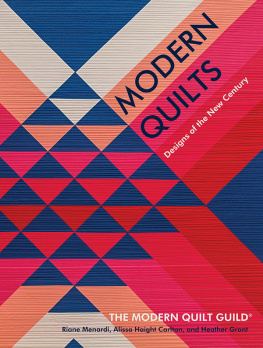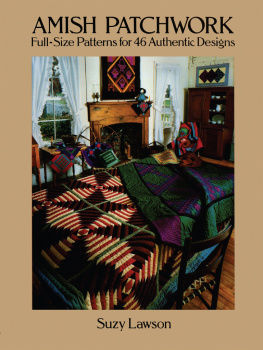AMISH QUILTS
Young Center Books in Anabaptist & Pietist Studies
Donald B. Kraybill, Series Editor
AMISH QUILTS
CRAFTING AN AMERICAN ICON
JANNEKEN SMUCKER

This book has been brought to publication with the generous assistance of the Coby Foundation, Ltd.,  and the Robert & Ardis James Foundation.
and the Robert & Ardis James Foundation.
2013 The Johns Hopkins University Press
All rights reserved. Published 2013
Printed in China on acid-free paper
9 8 7 6 5 4 3 2 1
The Johns Hopkins University Press
2715 North Charles Street
Baltimore, Maryland 21218-4363
www.press.jhu.edu
Library of Congress Cataloging-in-Publication Data
Smucker, Janneken.
Amish quilts : crafting an American icon / Janneken Smucker.
pages cm. (Young Center books in Anabaptist & Pietist studies)
Includes bibliographical references and index.
ISBN 978-1-4214-1053-1 (hardcover : alk. paper) ISBN 978-1-4214-1054-8 (electronic)
ISBN 1-4214-1053-2 (hardcover : alk. paper) ISBN 1-4214-1054-0 (electronic)
1. Amish quilts. I. Title.
NK9112.S625 2013
746.4608828973dc23
2012047088
A catalog record for this book is available from the British Library.
Special discounts are available for bulk purchases of this book. For more information, please contact Special Sales at 410-516-6936 or specialsales@press.jhu.edu.
The Johns Hopkins University Press uses environmentally friendly book materials, including recycled text paper that is composed of at least 30 percent post-consumer waste, whenever possible.
TO RICK AND CALLA
IN MEMORY OF MARY HOSTETLER BEECHY, ESTHER BEECHY MCDOWELL, AND ARDIS JAMES
Contents
Preface
BEFORE 1971 NO ONE bothered pairing the adjective Amish with the noun quilt. Few people outside Amish settlements knew there was anything distinct about the types of patchwork bedcovers Amish families kept folded in their cedar chests or displayed on guest beds. The Amish themselves just called them quilts or used the Pennsylvania German word debbich. But in 1997, when noted art critic Robert Hughes wrote his sweeping survey of American art history, he called Amish quilts Americas first major abstract art. This book explores how, in a mere quarter century, these objects shifted in status from obscurity within a relatively closed religious community to artworks considered by a prestigious critic as precursors to great modern American abstract paintings.
Today Amish quilts regularly appear in arenas quite distinct from one another. In 2010 the de Young Museum of San Francisco hosted Amish Abstractions: Quilts from the Collection of Faith and Stephen Brown. The exhibition, featuring quilts suspended flat on white walls, with labels offering only speculative geographic attributions rather than names of artists, was in many ways typical of the countless Amish quilt exhibitions that have graced the walls of galleries and museums since 1973. It showcased quilts hung as one would hang paintings rather than as bedcoverings. It offered scant information about the Amish women presumed to have crafted these objects. And it signaled to viewers that quilts pieced from dark, solid-colored fabrics in simple geometric patterns were indeed works of art.
By contrast, quilts also regularly appear in small country stores located in Amish settlements. Here one can find quilts stacked horizontally on beds, hanging vertically over bars like newspapers at a public library, as well as hung on walls like paintings. One can sift through piles of pillows, quillows (a combination of a quilt and pillow), potholders, placemats, tote bags, and wall hangings, purported to be pieced and quilted by Amish women. Few of these objects, also collectively called Amish quilts, bear much resemblance to the quilts at the de Young Museum. Yet these quilts and quilted objectsmarketed to tourists visiting Amish countryare also typically made by unnamed Amish makers (as well as by unnamed women of other religious and ethnic backgrounds). Does a contemporary quilt sold at Country Lane Quilts have anything in common with the work of art hanging at the de Young other than attribution to makers of the same Anabaptist faith?

Amish quilt shop in Lancaster County, Pennsylvania, 2010.
(Photograph by Nao Nomura)
These objects indeed have a shared story, rooted in the slow change and negotiated boundaries of Amish families and church districts of the late nineteenth and early twentieth centuries, and in the parallels art enthusiasts and craft revivalists have identified between old quilts and abstract art in the late 1960s and 70s. They all share the role of commodity, as objects of consumer desire. Collectively, these objects tell the story of an ongoing search for authenticity and simplicity, a quest that has taken many forms since humanswith eyes, minds, and hearts situated in the modern experiencebegan seeking out goods that reflected a simpler, seemingly more authentic past.

United States Postal Service stamps American Treasures series issued in 2001 featuring quilts from the Esprit corporate collection.
(Courtesy of the USPS)

Washington, D.C., MetroBus Stop advertising an exhibit of Amish quilts at the Textile Museum in 2009.
My own story also connects me to these quilts. I am a fifth-generation Mennonite quiltmaker who learned the craft from my own grandmother. When many of my ancestors first immigrated to North America in the eighteenth century, they were members of the Amish faith, but they joined the Mennonites following a late nineteenth-century division. When my great-great grandmother first began making quilts, she would have been closely connected to the Amish church. My cultural heritage inspired me to begin studying Amish quilts more than ten years ago, serving as the curatorial assistant at the International Quilt Study Center & Museum at the University of NebraskaLincoln, the home of the worlds largest publicly held collection of quilts, including several hundred attributed to Amish makers.
Like many others before me, I thought these old Amish bedcoverings were beautiful aesthetically and found them intriguing because they were made within the confines of a conservative religion. As I learned to identify commonly used patterns and fabrics while caring for these quiltsfolding them in acid-free tissue paper and storing them in a state-of-the-art textile storage facilityI began to think about why we now treat these objects like valuable works of art. And as I became acquainted with collectors who owned many fine Amish quilts and dealers who bought and sold them, I understood that like other art objects, these quilts were commodities. I also knew, growing up near an Amish settlement in northern Indiana, that Amish women have continued to make quilts that look nothing like the older dark quilts owned by museums and private collectors. The new cheery, light-colored quilts, often adorned with flowers and hearts, were sold at shops catering to tourists and auctioned at benefit sales raising money for local schools and fire departments. This world seemed quite distinct from that of art museums and private collectors. Yet I knew that these disparate quilts must have shared origins. In this book, I explore this and other paradoxes surrounding Amish quilts.
Next page








![Beverly M Lewis] - The Beverly Lewis Amish Heritage Cookbook](/uploads/posts/book/96304/thumbs/beverly-m-lewis-the-beverly-lewis-amish-heritage.jpg)




 and the Robert & Ardis James Foundation.
and the Robert & Ardis James Foundation.

